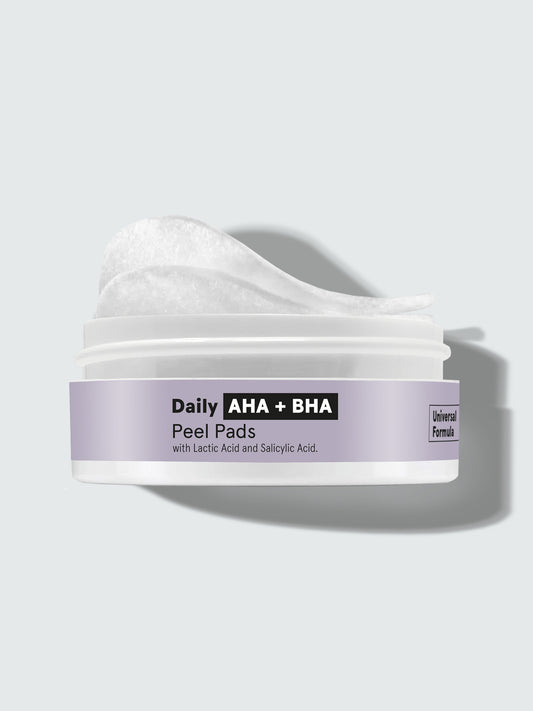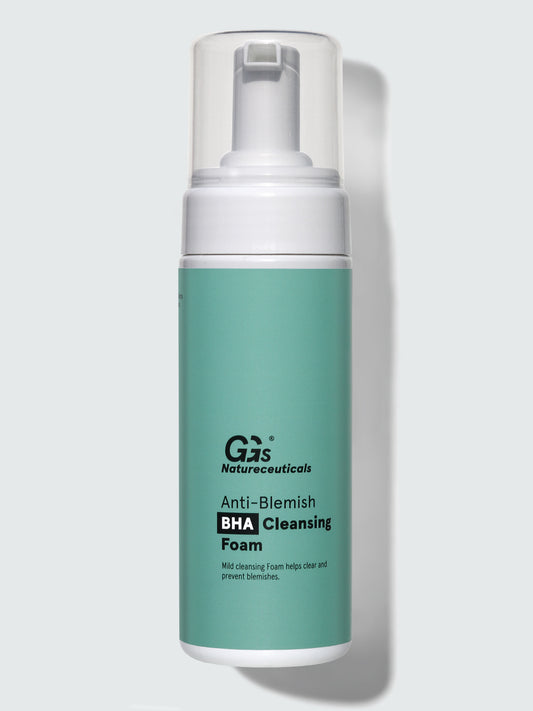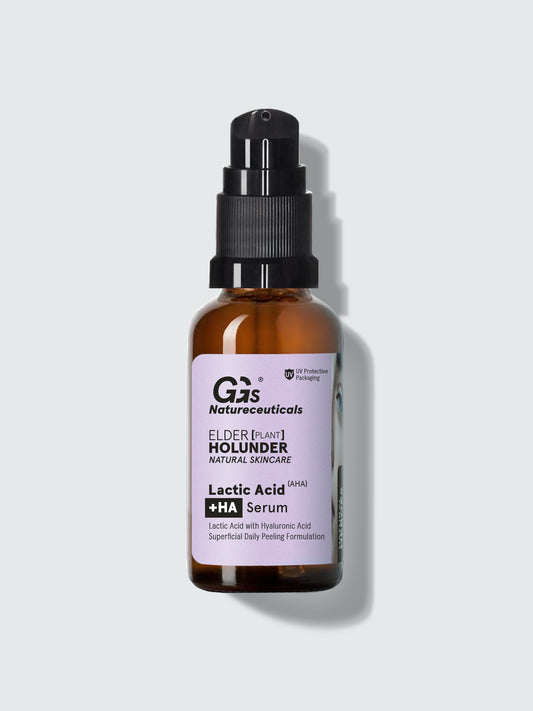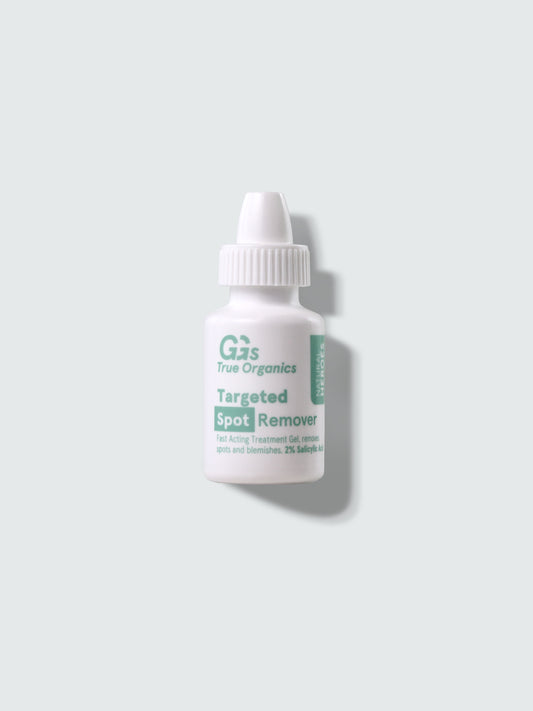How Do Chemical Peels Work?
As we age, the renewal rate of our skin cells slows down, leading to longer-lasting dead skin cells on the surface. This can make the skin feel rough and appear dull. Moreover, the thickened stratum corneum (outermost layer of the skin) hinders the absorption of skincare ingredients into deeper layers.Chemical peels, like acid peels, can remedy this: they dissolve the bonds between the cells in the stratum corneum, gently removing dead skin cells. With regular and sustained use (4-6 weeks), lasting effects on skin renewal become evident: the skin becomes more even, smoother, and more radiant, an intact skin barrier is promoted, skin moisture is regulated, and the formation of firming skin structures such as collagen and elastin is stimulated.
What Do Acid Peels Do?
Through the exfoliation of the skin's surface, acid peels have many positive effects on the complexion:
- Smoother and more radiant complexion: Dead skin cells are removed, and pores are refined.
- Reduced signs of sun damage: Regular exfoliation lightens hyperpigmentation and age spots.
- Fewer skin impurities: Peels clear the pores of excess skin particles and prevent pimples and blackheads.
- Improved absorption of skincare ingredients: The thinned stratum corneum facilitates the penetration and utilization of skincare ingredients.
- Increased moisture: Some chemical peels directly enhance the skin's ability to absorb water.
- Anti-aging effect: Improved cell renewal makes the skin firmer and more elastic, reducing existing wrinkles and fine lines.
Depending on individual needs, skin condition, and care preferences, the right acid peel can be chosen. How to do this? Read more here!
Types of Acid Peels
Acid peels can be categorized based on their underlying chemical structure. For example, the following categories can be distinguished:
- Alpha-Hydroxy Acids (AHA)
- Beta-Hydroxy Acids (BHA)
- • Polyhydroxy Acids (PHA))
Alpha-Hydroxy Acids (AHA)
AHAs are water-soluble compounds that do not penetrate deeply into the skin. They primarily work on the skin's surface, the stratum corneum.AHAs are preferred when firming the skin, reducing wrinkles and fine lines, and enhancing skin hydration are priorities. They are the typical acids used when aiming for that certain "glow" in the skin.
Depending on the cosmetic formulation and concentration used, AHAs are suitable for all skin types, particularly dry, dull, sun-damaged, and/or aging skin.
The various AHAs differ in molecule size, affecting how deeply they penetrate the stratum corneum. This penetration behavior influences the effectiveness and tolerance of the AHA:
- Glycolic Acid: The smallest among cosmetically applicable AHAs, it penetrates the skin most easily, acting quickly with the most direct effect.
- Lactic Acid: Compared to glycolic acid, lactic acid is larger and penetrates the skin less intensely, making it more tolerable and gentler. Read more about the effects and applications of lactic acid here in detail!
- Mandelic Acid: Structurally larger than glycolic and lactic acids, mandelic acid penetrates the skin less easily. It is often recommended for sensitive, easily irritated, or barrier-damaged skin.
- Other AHAs like malic acid, tartaric acid, or citric acid are less commonly used in dermatocosmetics and have secondary relevance.
Beta-Hydroxy Acids (BHA)
Chemically, many beta-hydroxy acids exist, but only salicylic acid is cosmetically relevant. The terms "BHA" and "salicylic acid" are thus often used synonymously in skincare.
Salicylic acid is fat-soluble and penetrates into the pores, unlike AHAs, removing hardened sebum. It is particularly suitable for impure and oily skin: It reduces the appearance of enlarged pores and can counteract blackheads and pimples. Salicylic acid also has mild anti-inflammatory effects and reduces redness, hyperpigmentation, and skin irritation. It is also used for keratinization disorders or inflammatory skin reactions like eczema or rosacea.
| Read more about the effects, applications, and combination possibilities of salicylic acid in this post! |
Which Acid is Best for the Skin?
Which Acid is Best for the Skin?
The good news is that there's no need to weigh up supposedly better or worse chemical peels. Instead, it's important to consider what specific concerns need to be addressed, the current state of the skin, and personal preferences.
An important criterion for selecting the appropriate chemical peel is the desired effect, in addition to achieving a more even skin texture with its application:
- Use AHA if the goal is to balance hyperpigmentation and wrinkles in sun-damaged and aging skin, as well as to firm and hydrate the skin.
- Use BHA if the objective is to reduce skin impurities, soothe the skin, quickly diminish inflammation, and minimize enlarged pores.
Are There Downsides to Chemical Peels?
Die richtige Anwendung ist beim Einsatz chemischer Peelings entscheidend. Vermeintliche Nebenwirkungen wie burning or skin redness are not normal and acceptable reactions to acid peels, but are often due to incorrect or overly intensive use. Therefore, it's essential to integrate chemical peels appropriately into your skincare routine, always considering your individual skin condition.
These articles provide guidance and practical tips for the correct use of BHA and AHA.
Many still perceive as a disadvantage the fact that the use of peels requires simultaneous and consistent use of sunscreen. Peels make the skin more sensitive to light by removing the top layer of dead skin cells, thus stripping away a small part of our skin's natural light protection. Therefore, the daily use of sunscreen (at least SPF 30) is absolutely crucial, when using chemical peels, to prevent the beneficial effects of the peel from being directly negated by the harmful consequences of UV radiation. UV radiation is responsible for up to 80% of premature skin aging, which manifests as wrinkles, fine lines, hyperpigmentation, and loss of firmness and elasticity. Thus, the need for sunscreen – not just when using peels – is not so much a disadvantage as it is the most effective anti-aging product on the market.









